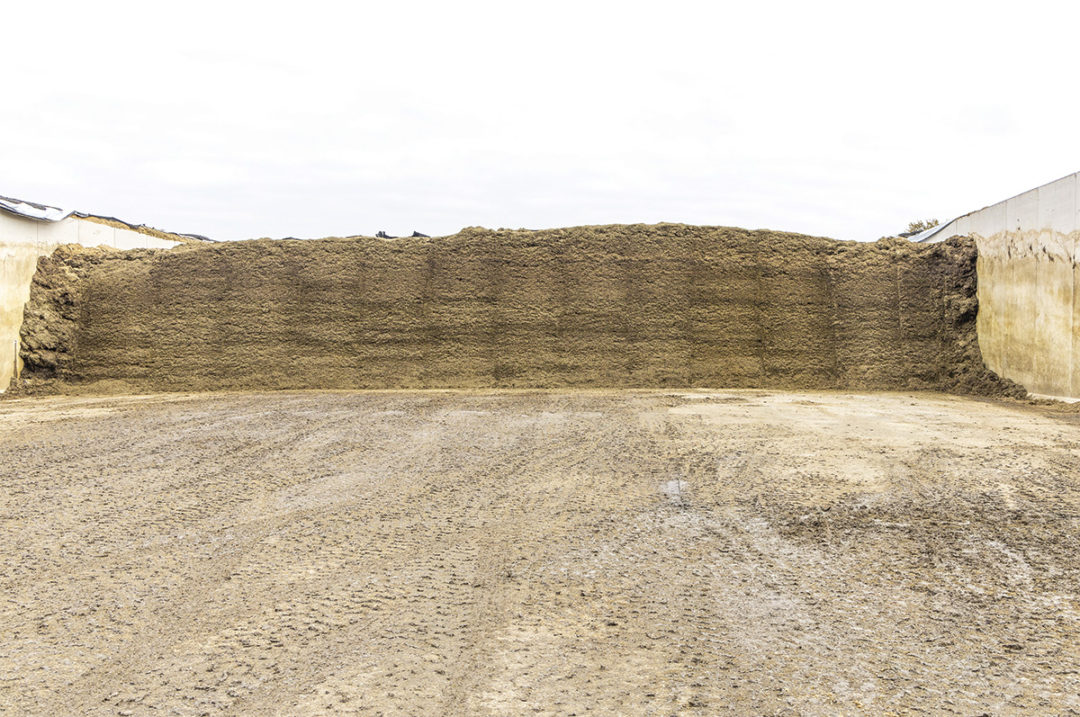When it comes to feed management, consistency is key. Without consistency, the ration the nutritionist creates may never see the feedbunk.
There are three areas where consistency is necessary to optimize feed management: inventory, mixing of the total mixed ration (TMR) and the feedbunk. While the steps taken at each stage seem simple, failing to be consistent in each can impact both milk production and farm profitability.
Inventory
There are two inventories: current silage on the farm and future silage coming to the farm either from the feed mill or from the crop field. Both inventories require regular analysis. As either inventory ages, there is a shift that can occur in dry matter and digestibility. For dry matter, it is important to have an accurate understanding of what the cow is eating. Digestibility is also critical as it impacts milk yield and component production. To best maintain the quality of the feed, it is best to cover the silage and create a clean face to decrease moisture and air exposure. A clean face is possible by using feed-specific equipment (avoiding cross-contamination), using the entire uncovered area and/or using a defacer.
Slowly changing from the current forage to the new forage is critical. Cow digestion is a fragile system, easily disrupted by change. Quick shifts from silage that has had a long time to ferment to silage that is just getting started won’t do the cow any favors. New silage needs at least one month to ferment before the cow will get the most benefit from it. Fermenting for up to three months is shown to help increase the digestibility of corn silage.
Mixing – TMR wagon
Mixing requires consistency. Farmers rely on their nutritionists to develop a plan to ensure production and financial goals are met. Those plans can be tossed out the window if the ration the nutritionist creates isn’t what comes out of the mixer.
Depending on the ration and type of mixer wagon on the farm, the order of operations when loading the feed ingredients changes. The goal of a TMR is to be the same throughout the entire load. An easy way to gauge the uniformity of the ration is to walk the bunk right after it is unloaded to see how similar the TMR is across the entire bunk. A more objective way to see a difference would be to use a Penn State Particle Separator (PSPS) on different samples throughout the feedbunk.
Feedbunk
Every cow wants to eat, and she needs the space to do so. Don’t discount the impact that the size of your feedbunks has on cow performance. The bunk needs to offer enough space for your size of cow (or else the boss cows will easily keep others from accessing feed). Even with the correct bunk size, consistency is required. There needs to be feed in front of every accessible feed space at all times of the day, and it needs to be dropped at similar times every day.
No one wants to eat old food. Cows are the same, which is why feed push-ups can make a difference. By pushing up feed regularly, cows have access to “fresh” feed throughout the day.
Timing also matters, which requires watching the herd. When do they want to eat? Is it when you’re feeding them? Consider setting up a trail camera to see how your herd is acting while you aren’t there.
By giving the cow space to eat and feeding her when she’s going to eat, farmers can ensure the cow’s rumen will remain full so those nutrients can be converted into milk.
Getting the most from feed
When put into rations, corn silage is $65 to $85 per ton as fed as an investment. It is safe to assume a cow will eat a minimum of 40 pounds as fed per cow per day. So a ton of corn silage will only feed 50 cows for one day. For a total ration, the cost is 15 cents to 22 cents per pound of dry matter intake.
All of this is to say what farmers already know: Feed is a huge investment, one that requires many steps to ensure the nutritional benefits reach the cow. By making feed management a priority and being consistent in best practices, farmers can set up their cows and themselves for success through optimized milk production.






